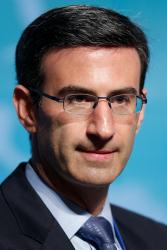Introduction
Fires—and the fire brigades that fight them—have evoked our interests and served as insightful parables for many generations. The purpose of this paper is therefore to explore the optimal design of a fire department when individuals are allowed to choose the design of their own homes, and when fires can spread from one house to another. A key finding is that the analytical prism used to evaluate an issue is critical: not surprisingly, using an inappropriate prism will often yield an inappropriate answer. Distorted models produce distorted decision-making. And on numerous issues involving the fire department, conventional paradigms offer a misleading perspective on the problem.
The basic intuition of the model below is that individuals do not take into account the benefits of building safer houses in reducing fire damages to their neighbors. Their level of care is therefore below the level that would produce the minimum social cost at any given fire department size. In other words, the presence of the externality—that homeowner 1 does not take into account the effects of his house design on the welfare of homeowner 2, and vice versa—implies that the individuals do not build safe enough homes relative to the social optimum for any given fire department.
The presence of the externalities also affects the optimal size of the fire department, however. The lower level of individual care makes it desirable to have a larger fire department, since the marginal return to a larger fire department is higher the less safe the homes are. The complication arises because expanding the fire department would encourage homeowners to build even less safe homes, thus exacerbating the externality. The insight is applicable to a wide number of real-world examples, including the use of unobservable security measures to thwart crime or terrorism and the policies adopted by international policy-makers to address financial crises.




